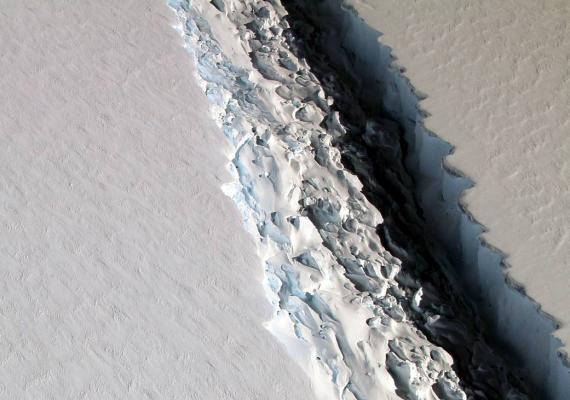
July 12 (UPI) — Scientists knew this day was coming. It was only a matter of time before a massive fissure finally broke and a huge iceberg separated from Antarctica’s Larsen C ice shelf.
According to the latest images from NASA’s Aqua MODIS satellite, the giant iceberg broke off from the Antarctic ice shelf sometime between Monday and Wednesday.
At 2,239 square miles, the iceberg is gigantic. Its size is roughly four times the size of the city of London, and its volume is twice that of Lake Erie. It weighs more than 1 trillion metric tons and, with the iceberg now gone, the Larsen C ice shelf is now 12 percent smaller.
“We have been anticipating this event for months, and have been surprised how long it took for the rift to break through the final few kilometers of ice,” Adrian Luckman, a researcher at Swansea University, said in a news release.
Luckman is the lead investigator on the MIDAS Project, a team of researchers in the U.K. studying the Larsen C ice shelf.

While the newly separated iceberg currently remains a single entity, it is likely to break into fragments in the future.
“Some of the ice may remain in the area for decades, while parts of the iceberg may drift north into warmer waters,” MIAS researchers wrote in a blog post.
Though the Larsen C ice shelf will regenerate to some extent, most researchers agree the loss of the iceberg will leave the ice shelf significantly less stable than it was before the break.
“The calving of this large iceberg could be the first step of the collapse of Larsen C ice shelf, which would result in the disintegration of a huge area of ice into a number of icebergs and smaller fragments,” David Vaughan, a glaciologist and the director of science at the British Antarctic Survey, said earlier this year.
In 2002, Larsen C’s neighbor, the Larsen B ice shelf, disintegrated in the wake of a similarly dramatic breakaway.





